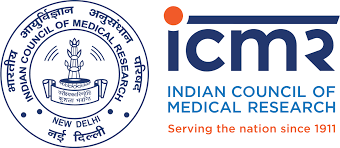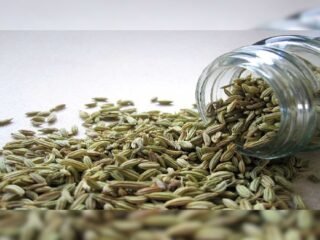New Delhi, 05 October, 2025: India, once known for its predominantly vegetarian and traditional diet, is now witnessing a health crisis linked to changing eating habits. A recent study by the Indian Council of Medical Research (ICMR) has uncovered a startling dietary imbalance among Indians — too many carbohydrates, too little protein, and an excess of saturated fats.
This nutritional pattern, the study warns, is contributing significantly to India’s soaring rates of obesity, diabetes, and metabolic syndrome, even among young adults.
The ICMR Study: What It Found
The ICMR-National Institute of Nutrition (NIN) conducted an extensive nationwide dietary assessment across rural and urban populations. The findings were clear — most Indians are consuming a carbohydrate-heavy, protein-deficient diet that fails to meet the body’s nutritional requirements.
On average, 65-70% of daily calorie intake among Indian adults comes from carbohydrates, while protein contributes only 8-10%, far below the recommended 15-20%. Fat consumption, particularly saturated fats, is also alarmingly high, driven by deep-fried foods and refined oils.
Dr. R. Hemalatha, Director of ICMR-NIN, stated, “Our data shows a serious nutritional imbalance across socio-economic groups. The traditional emphasis on cereals and the neglect of proteins and vegetables are key drivers of lifestyle diseases.”
The Problem with Too Many Carbs
Carbohydrates are an essential source of energy — but excessive intake, especially from refined sources like white rice, maida, and sugar, can wreak havoc on metabolism.
Here’s how:
- Blood sugar spikes: High-carb diets raise glucose levels, increasing insulin demand. Over time, this leads to insulin resistance — a precursor to type 2 diabetes.
- Fat accumulation: Unused carbohydrates are stored as fat, particularly around the abdomen, contributing to obesity and heart disease.
- Nutrient dilution: A diet overloaded with starch leaves little room for other essential nutrients, creating long-term deficiencies.
Dr. S.K. Mehta, a Delhi-based endocrinologist, explains, “The Indian diet is rich in polished rice, wheat, and potatoes but poor in high-quality proteins. This imbalance keeps insulin levels elevated and promotes fat storage — the foundation of India’s diabetes epidemic.”
The Protein Deficiency Crisis
Despite being the world’s largest producer of pulses, India faces widespread protein deficiency. According to the ICMR data, more than 70% of the population consumes less than the recommended daily protein — 0.8 to 1 gram per kilogram of body weight.
Why Protein Matters:
- Regulates appetite: Protein keeps you fuller for longer, reducing overeating.
- Builds lean muscle: Essential for maintaining metabolism and healthy body composition.
- Supports insulin sensitivity: Protein helps balance blood sugar levels, reducing diabetes risk.
The study also revealed that vegetarians and low-income households are more likely to suffer from protein deficiency due to limited access to animal sources like eggs, fish, or poultry.
The Hidden Culprit: Saturated Fats and Processed Oils
While traditional Indian cooking relied on mustard oil, ghee, and coconut oil in moderation, modern diets are dominated by refined vegetable oils and deep-fried foods. These oils are rich in saturated and trans fats, which raise bad cholesterol (LDL) and increase heart disease risk.
The ICMR report found that fat intake now exceeds the recommended level in many urban populations, particularly among younger adults. The combination of high carbs, high fat, and low protein creates a metabolic environment ripe for weight gain and insulin resistance.
Nutritionist Dr. Priya Khanna comments, “The modern Indian plate has become energy-dense but nutrient-poor. Street food, packaged snacks, and sugary drinks are displacing wholesome meals — leading to a dangerous rise in obesity and early-onset diabetes.”
Urban vs Rural Divide
The ICMR study also highlighted stark contrasts between urban and rural diets:
- Urban areas: Higher fat and sugar intake, especially from processed foods and bakery items.
- Rural areas: Still carbohydrate-dominant but with inadequate protein and micronutrient intake due to economic and accessibility issues.
Interestingly, both groups are showing a converging trend toward obesity, indicating that poor diet quality is now a nationwide concern, regardless of income or geography.
Diabetes and Obesity: India’s Growing Health Burden
India is now home to the second-largest diabetic population in the world, with more than 100 million people living with diabetes, as per ICMR’s India Diabetes Study 2023.
The rise in obesity — particularly central obesity (fat around the waist) — has been a major contributor. Researchers have found that even normal-weight Indians can be metabolically obese, meaning they carry excess internal fat despite appearing slim.
This “thin-fat” phenotype makes Indians more prone to insulin resistance, fatty liver disease, and heart problems at a younger age than Western populations.
Dr. Mehta adds, “Our genetic predisposition makes us vulnerable, but diet and lifestyle are accelerating the problem. We’re seeing 25-year-olds with cholesterol levels and blood sugar readings once seen only in people over 50.”
What Needs to Change: Expert-Backed Dietary Fixes
To reverse this trend, experts suggest a balanced macronutrient ratio:
- Carbohydrates: 50-55% of daily calories
- Proteins: 15-20%
- Fats: 25-30% (mainly unsaturated fats)
1. Increase Protein Intake
Add lean protein sources like:
- Eggs, paneer, curd
- Lentils, chickpeas, rajma
- Nuts, seeds, and soy-based foods
- Fish and chicken (for non-vegetarians)
2. Choose Smart Carbs
Replace refined carbs with:
- Whole grains like millets, brown rice, oats, and quinoa
- Fiber-rich fruits and vegetables
3. Switch to Healthy Fats
Use oils like mustard, groundnut, or olive oil. Limit deep-frying and avoid reusing oil.
4. Cut Down on Sugar and Ultra-Processed Foods
Avoid sweetened beverages, packaged snacks, and bakery items that are high in empty calories.
5. Follow Portion Control
Eating mindfully — rather than cutting out food groups — helps manage weight sustainably.
A Cultural and Policy Challenge
Experts argue that fixing India’s diet problem requires not just individual effort but systemic change. School lunch programs, workplace cafeterias, and food labeling laws can all play a part.
ICMR researchers recommend:
- Fortifying foods with protein and micronutrients
- Nutrition education campaigns targeting rural and urban consumers
- Incentivizing local production of protein-rich crops like lentils and soy
Public health nutritionist Dr. Khanna emphasizes, “We need to modernize our food habits without losing traditional wisdom. India’s millet- and pulse-based diets were once the gold standard of balanced nutrition — it’s time to bring them back.”
The ICMR study paints a clear picture — India’s carbohydrate-heavy, protein-poor diet is silently fueling a national health crisis. From diabetes and obesity to heart disease, poor nutrition is emerging as the root cause of multiple chronic illnesses.
The solution lies not in fad diets or quick fixes but in returning to a balanced, traditional approach — one that includes whole grains, pulses, proteins, and moderate healthy fats.
As Dr. Hemalatha concludes, “Food is the foundation of health. The choices we make every day at our dining table will determine the future of our nation’s wellbeing.”







